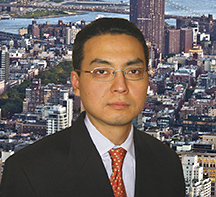INTERVIEW
Faster Than You Can Blink
High-Frequency Trading With Sang Lee

Sang Lee is a cofounder of Aite Group and serves as managing partner. Lee, whose expertise lies in the securities and investments vertical growth, has advised global financial institutions, software/hardware vendors, and professional services firms in sellside and buyside electronic trading technology and market structure.
Prior to establishing Aite Group, Lee was a founding member of Celent Communications and served as the manager of the securities and investments group as well as the operations group. At Celent, Lee played a pivotal role in creating and growing one of the leading securities and investments practices in the financial services research industry.
Lee received his bachelor’s degree from the University of Michigan and his master’s degree from Columbia University. He is fluent in English and Korean.
Stocks & Commodities Editor Jayanthi Gopalakrishnan and Staff Writer Bruce Faber spoke to Sang Lee on August 3, 2011.
Sang, how did you get interested in the trading business?
I was doing business development strategy work. Eventually, I got interested in trading the markets about three or four years ago in the process of my research.
What made you write the book The High Frequency Game Changer?
The bulk of it was cowritten with my former colleague Paul Zubulake, who really deserves credit in terms of putting the book together. The book itself is not really meant for experts in the high-frequency market; it is very much an introductory piece. When you read it, though, you’ll see that it is really more than just talking about high-frequency trading per se. There is a lot of information about some of the changes we have gone through over the last 10 years, whether it is regulatory changes or introduction of new technology. It is a look at what has brought about the growth of high-frequency trading in the various markets.
Nothing is intrinsically wrong with high-frequency trading. We view it as a natural progression or a natural evolution of the markets.I could argue that the impetus for the book itself was because there has been a lot of controversy associated with high-frequency trading in the last couple of years, although that has died down a bit. It was sort of an introduction to share our perspective that nothing is intrinsically wrong with high-frequency trading. We view it as a natural progression or a natural evolution of the markets. This means, of course, that their long-term success is not guaranteed. If something comes along that is better in the next 10 years, they will be just like the specialists or market makers. They will be another group of folks that at one point in time did well, and they are no longer as viable because of the changing markets. What we were trying to do was put high-frequency trading into a historical context.
Before we get into high-frequency trading, for the benefit of our readers, can you give us an overview of what it is?
That is very tough to do, to be perfectly honest. The term “high-frequency trading” itself may not be the most appropriate thing to use to label the firms that are supposedly doing high-frequency trading. A better description may be “automated trading,” where the concept is around machines or computers actually doing the trading and not humans. Conceptually, that is probably the right thing to go with.